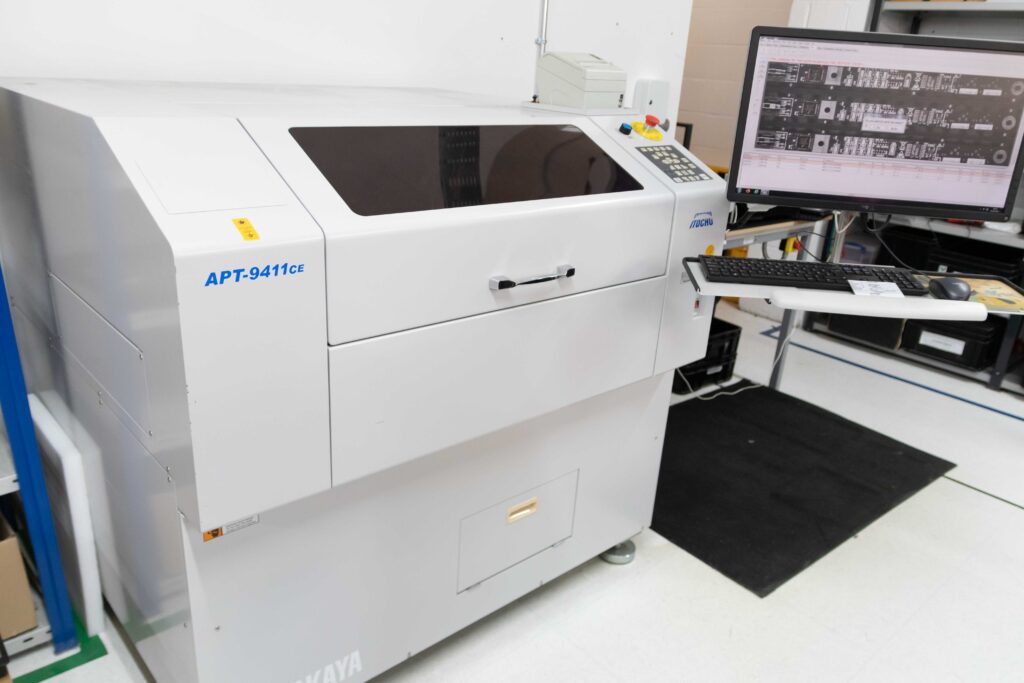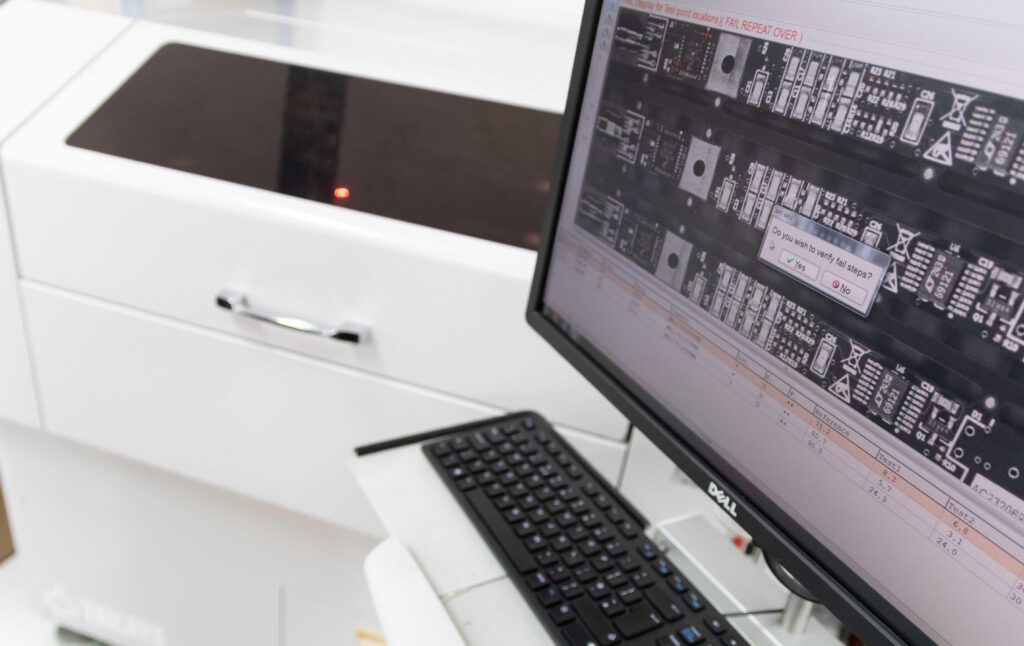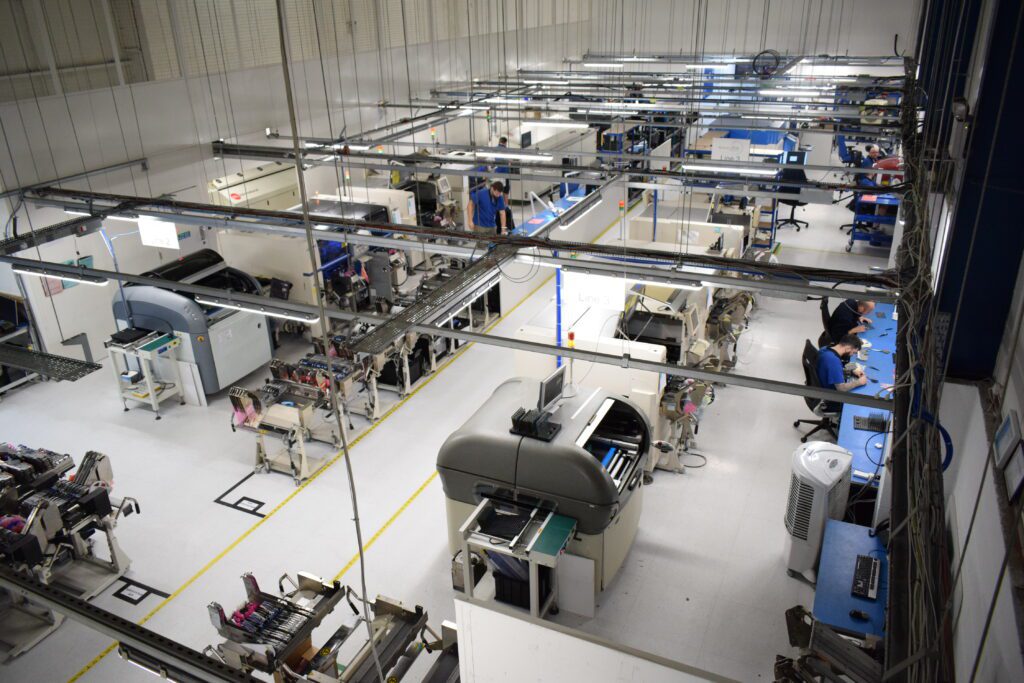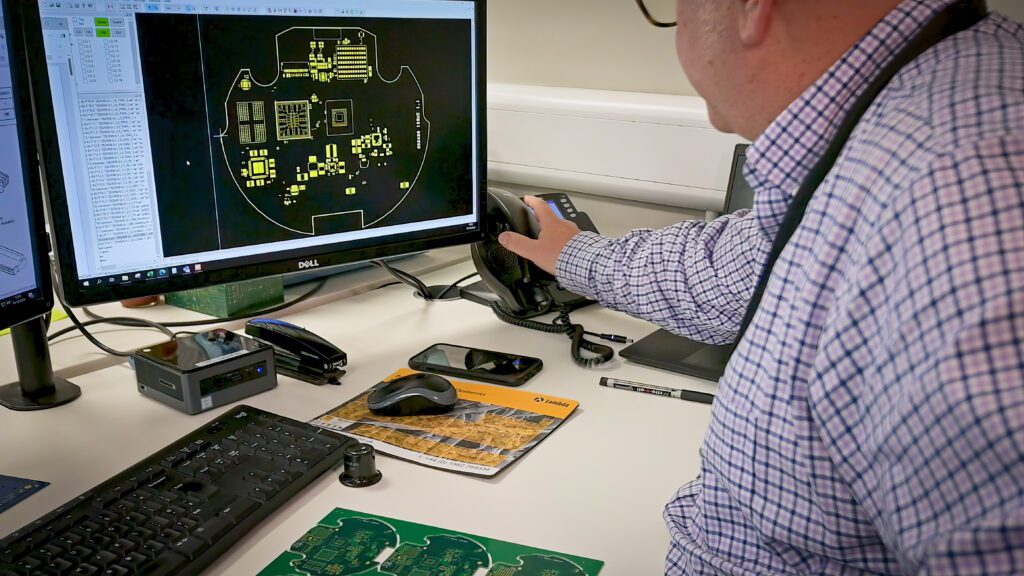Quality assurance is one of the most important aspects of Electronics Manufacturing. As the printed circuit boards assembled each day become denser, faster, and more complex, ensuring every connection performs flawlessly is essential. That’s where Flying Probe Testing (FPT) comes in.
Flying Probe Testing is a flexible, highly accurate way to validate PCB assemblies without the need for expensive custom test fixtures.
What Is Flying Probe Testing?
Flying Probe Testing is an automated electrical test process used to verify that a Printed Circuit Board Assembly (PCBA) is built correctly. Instead of using a fixed test bed with thousands of pins, flying probe systems use a set of movable probes that fly across the board’s surface, contacting test points sequentially.
These probes measure continuity, resistance, capacitance, and polarity to ensure every connection, track, and component behaves as expected, catching issues such as:
- Open or short circuits
- Misplaced or incorrect components
- Soldering faults
- Polarity or orientation errors
The test is driven directly from CAD data and component libraries, which makes it ideal for prototype, NPI (New Product Introduction), and low-to-medium volume builds.
Why Manufacturers in the UK Use Flying Probe Testing
Across the UK, Flying Probe Testing is increasingly becoming the go-to inspection method because it combines speed, precision, and flexibility. Unlike in-circuit or bed-of-nails testing, there’s no need to create a dedicated test fixture, which can be expensive and time-consuming.
Key benefits include:
- Fast Setup: Perfect for prototypes or frequent design revisions.
- Low Cost: Eliminates the need for expensive test jigs.
- Non-Destructive: Gentle probing avoids board damage.
- Comprehensive Coverage: Detects electrical, mechanical, and component faults.
- Data-Driven Results: Provides detailed test reports for traceability and quality records.

Flying Probe vs. Other Test Methods
| Feature | Flying Probe Testing | ICT (Bed-of-Nails In-Circuit Test) | Functional Test |
|---|---|---|---|
| Initial Setup (NRE) | Very low – no fixture required | High – requires custom Bed-of-Nails fixture (one-off cost) | Medium – depends on interface and software |
| Operational Setup / Changeover | Simple and fast | Fast – once fixture exists, boards load easily | Moderate – depends on complexity |
| Fixture Cost | None | High (custom mechanical fixture per PCB design) | Medium |
| Defect Coverage | High – electrical and component-level | Very high – electrical and some functional coverage | Functional only – validates overall system behaviour |
| Test Speed (per board) | Slower (serial probing) | Very fast (parallel testing of all nets) | Varies – often slower due to full-system testing |
| Flexibility | Very high – easy to adapt for new revisions | Low – fixed hardware, not easily modified | Moderate |
| Risk of Damage | Low – gentle probe force | Medium – high probe count can stress test pads | Low |
| Data Output | Detailed diagnostic data | Very details data output. Pass/fail with pinpointed faults | Functional performance data |
| Best Use Case | Prototypes, low-volume, NPI | High-volume, mature designs | Final system verification |
By combining Flying Probe with Automated Optical Inspection (AOI) and X-ray inspection, manufacturers achieve near-complete coverage of both visual and electrical integrity before functional testing even begins.
Flying Probe Testing at Active-PCB Solutions
At Active-PCB Solutions, we use state-of-the-art Flying Probe Testing systems at our Reading, UK facility to ensure boards meet the highest quality standards.
Our in-house Flying Probe Testing process provides:
- Full electrical validation of every net and component
- Early detection of manufacturing issues before final test
- Rapid turnaround for prototypes and production runs
- Integration with AOI, X-ray, and functional test stages
Whether you need a one-off prototype or a production batch, our flexible testing solutions ensure reliability, consistency, and compliance with IPC standards.
Flying Probe Testing gives you the confidence that your PCBAs are electrically sound before they reach your customer or final product assembly line. In an industry where reliability is everything, this method delivers the perfect balance of speed, accuracy, and cost efficiency, especially for UK-based OEMs seeking local manufacturing support.
Ready to enhance your PCB testing strategy? Contact us to discuss Flying Probe Testing for your next project.



